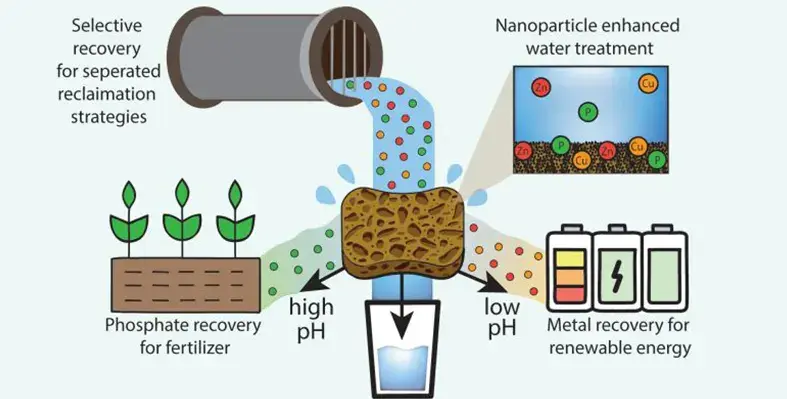Researchers have created a functional sponge that is capable of efficiently soaking up certain pollutants from water and then releasing them on demand
Industrial manufacturing and agriculture, in particular, experience mineral and fertiliser loss due to runoff, leaving valuable non-renewable resources as pollutants in bodies of water. Those resources include heavy metals like zinc and copper and also phosphate.
The innovation presents a reusable and low-cost solution for cleaning storm runoff while simultaneously recovering valuable metals like zinc and copper, as well as phosphate. Using surface iron oxide nanoparticles specialised for capturing specific contaminants, the sponge collects the minerals and then discharges them only when triggered by changes in pH. These findings were achieved by researchers at Northwestern University and published in the American Chemical Society's journal Environmental Science and Technology Water.
Doctoral student and first author on the paper, Kelly Matuszewski believes it is important to understand the interaction between these minerals and utilise them, rather than finding ways to discard them. Through her research she discovered that lowering water pH flushed out the captured copper and zinc from the sponge, while raising water pH loosened the phosphates.
In an attempt to commercialise the sponge-based technology, Vinayak Dravid, co-author and Northwestern professor of materials science and engineering has co-founded a startup with additional NSF support through the Small Business Innovation Research programme, which will further develop the material for real-life scenarios.
"The technology can be used as a universal sorbent or 'catch-all,' or it can be tailored to certain groups of contaminants like metals, plastics or nutrients," said Dravid. In their future research, the team plans to account for biofilms, clogging or water flow dynamics on the sponge's performance, while also testing the maximum mineral levels the sponge can absorb.





